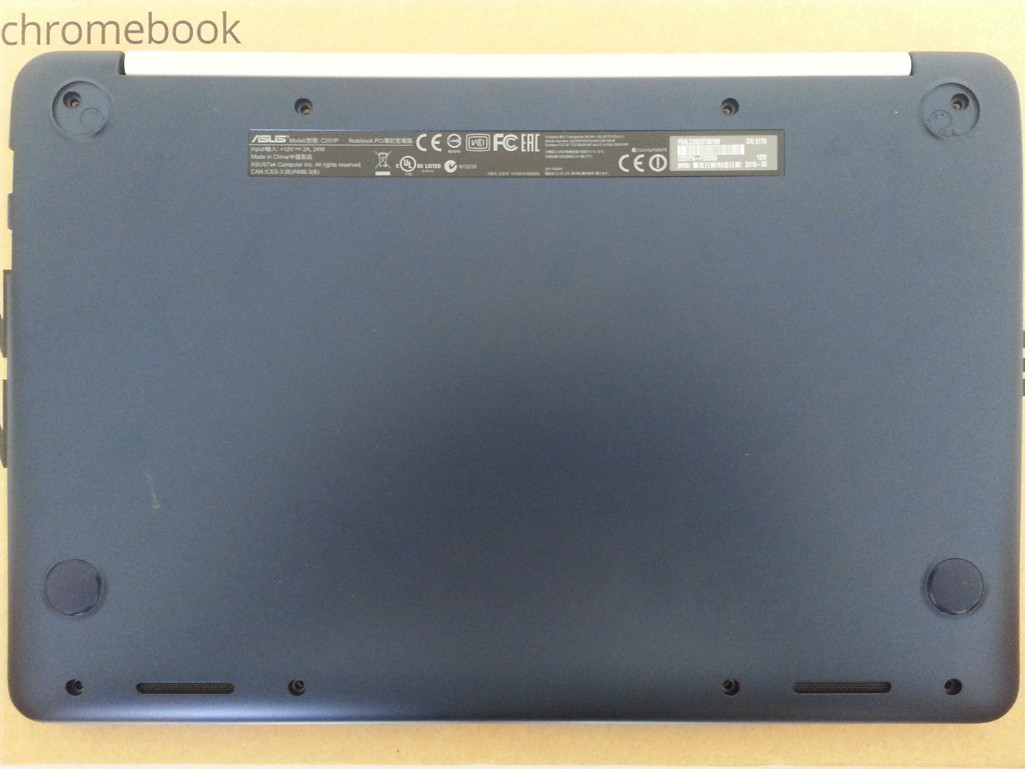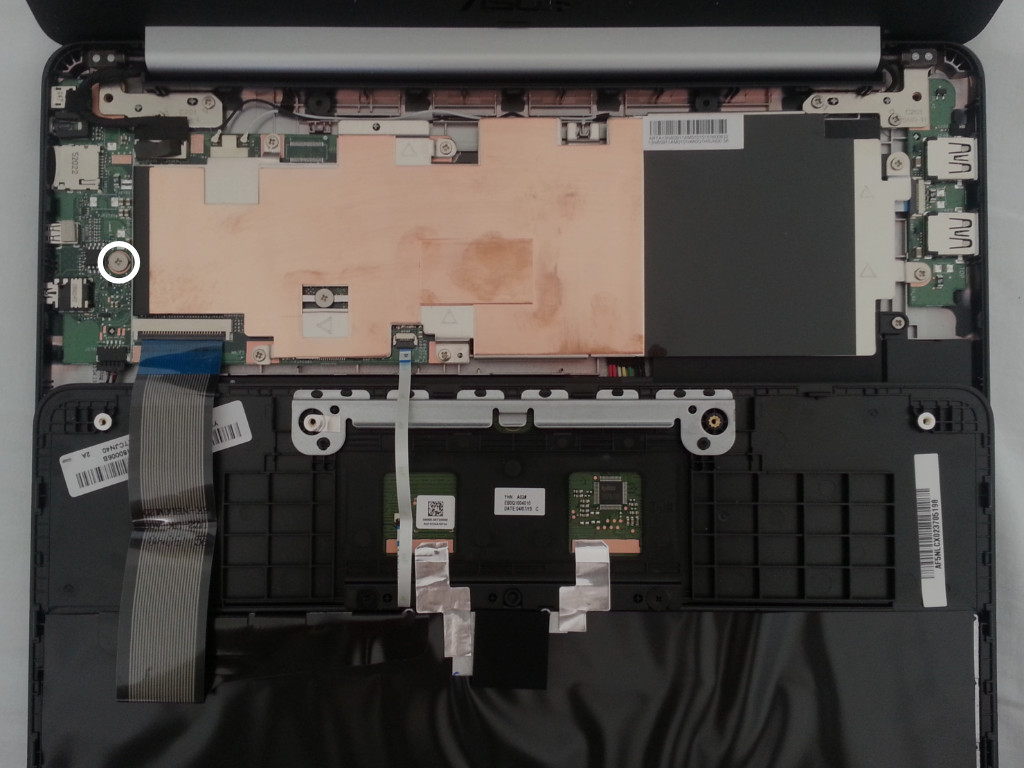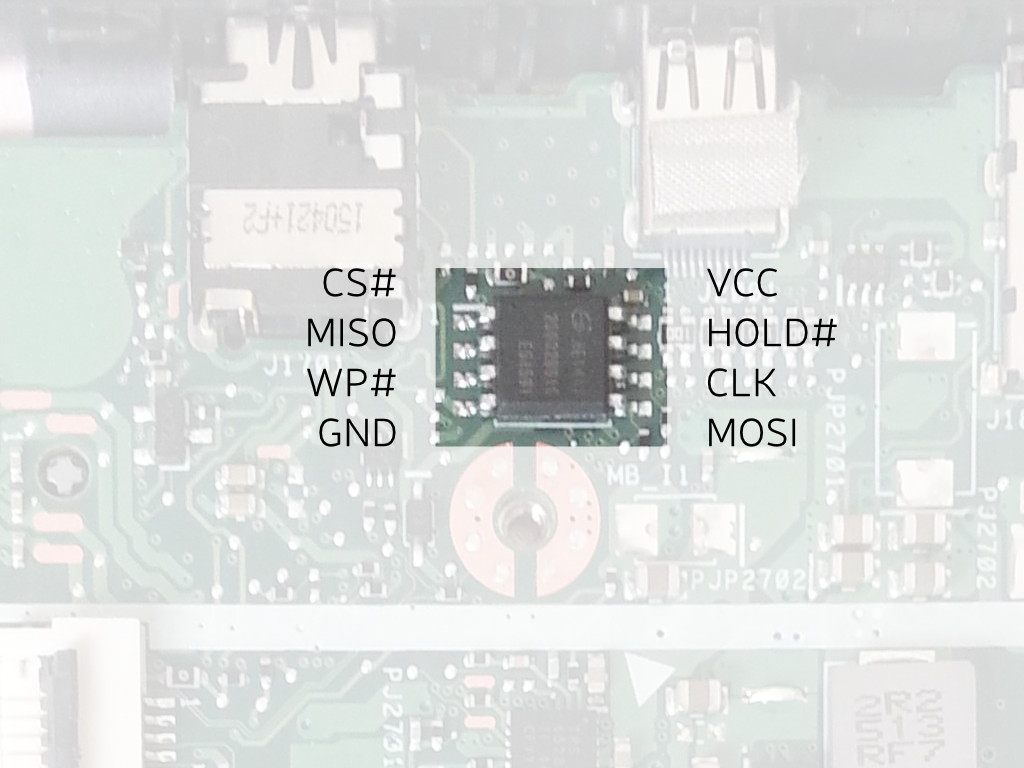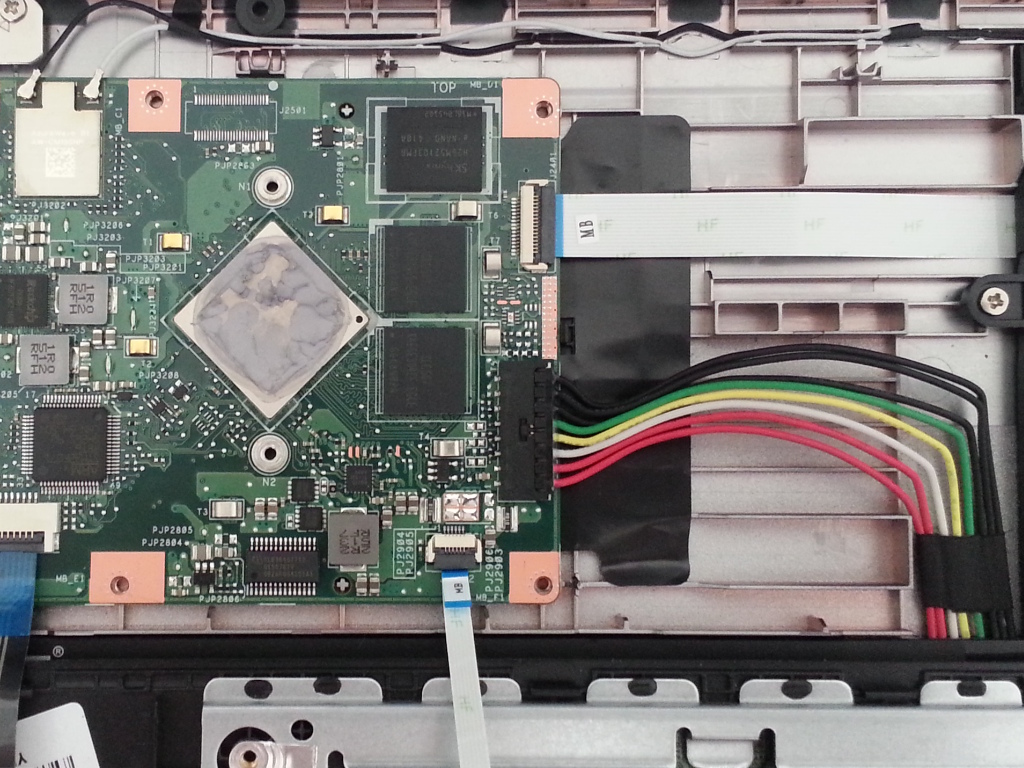mirror of
https://git.savannah.gnu.org/git/gnuboot.git
synced 2025-01-10 01:19:15 +01:00
225 lines
8.7 KiB
Markdown
225 lines
8.7 KiB
Markdown
|
|
---
|
||
|
|
title: ASUS Chromebook C201 installation guide
|
||
|
|
x-toc-enable: true
|
||
|
|
...
|
||
|
|
|
||
|
|
TODO: NUKE. ARM has been dropped from Libreboot, for now.
|
||
|
|
|
||
|
|
TODO: Replace this with documentation about uboot instead
|
||
|
|
|
||
|
|
TODO: integrate uboot in libreboot, both as a generic bootloader payload for
|
||
|
|
coreboot, and on its own, for hardware initialization of many targets.
|
||
|
|
|
||
|
|
The version of Depthcharge used here is very old, from 2016, and support for
|
||
|
|
this laptop was dropped in recent releases. It will be re-added at a later
|
||
|
|
date. If you wish to use Libreboot on this board, right now you must install
|
||
|
|
Libreboot 20160907. This page has been retained on libreboot.org for now, but
|
||
|
|
you should refer to the documentation provided in the Libreboot 20160907
|
||
|
|
release if you want to learn more. NOTE: in that release, the documentation is
|
||
|
|
written in raw HTML, because the Markdown-based static site generator used on
|
||
|
|
libreboot.org had not yet been written at that point.
|
||
|
|
|
||
|
|
These instructions are for installing Libreboot to the ASUS Chromebook
|
||
|
|
C201 (more known under a name [*veyron speedy*](../misc/codenames.md)).
|
||
|
|
Since the device ships with Coreboot, the installation
|
||
|
|
instructions are the same before and after flashing Libreboot for the
|
||
|
|
first time.
|
||
|
|
|
||
|
|
Look at the [list of ROM images](#rom) to see which image is compatible
|
||
|
|
with your device.
|
||
|
|
|
||
|
|
Libreboot can be installed internally from the device, with sufficient
|
||
|
|
privileges. The installation process requires using *Google's modified
|
||
|
|
version of flashrom*, that has support for reflashing the Chromebook's
|
||
|
|
SPI flash. Otherwise, flashing externally will work with the upstream
|
||
|
|
flashrom version.
|
||
|
|
|
||
|
|
*Google's modified version of flashrom* is free software and its
|
||
|
|
source code is made available by Google:
|
||
|
|
[flashrom](https://chromium.googlesource.com/chromiumos/third_party/flashrom/).\
|
||
|
|
It is not distributed along with Libreboot yet. However, it is
|
||
|
|
preinstalled on the device, with ChromeOS.
|
||
|
|
|
||
|
|
Installing Libreboot internally requires sufficient privileges on the system
|
||
|
|
installed on the device. When the device has ChromeOS installed (as it does
|
||
|
|
initially), it is necessary to gain root privileges in ChromeOS, to be able to
|
||
|
|
access a root shell.
|
||
|
|
|
||
|
|
Gaining root privileges on ChromeOS
|
||
|
|
--------------------------------
|
||
|
|
|
||
|
|
In order to gain root privileges on ChromeOS, developer mode has to be
|
||
|
|
enabled from the recovery mode screen and debugging features have to be
|
||
|
|
enabled in ChromeOS.
|
||
|
|
|
||
|
|
Instructions to access the [recovery mode
|
||
|
|
screen](../depthcharge/#recovery_mode_screen) and [enabling developer
|
||
|
|
mode](../depthcharge/#enabling_developer_mode) are available on the page
|
||
|
|
dedicated to [depthcharge](../depthcharge/).
|
||
|
|
|
||
|
|
Once developer mode is enabled, the device will boot to the [developer
|
||
|
|
mode screen](../depthcharge/#developer_mode_screen). ChromeOS can be
|
||
|
|
booted by waiting for 30 seconds (the delay is shortened in Libreboot)
|
||
|
|
or by pressing *Ctrl + D*
|
||
|
|
|
||
|
|
After the system has booted, root access can be enabled by clicking on
|
||
|
|
the *Enable debugging features* link. A confirmation dialog will ask
|
||
|
|
whether to proceed.\
|
||
|
|
After confirming by clicking *Proceed*, the device will reboot and ask
|
||
|
|
for the root password to set. Finally, the operation has to be confirmed
|
||
|
|
by clicking *Enable*.
|
||
|
|
|
||
|
|
After setting the root password, it becomes possible to log-in as root.
|
||
|
|
A tty prompt can be obtained by pressing *Ctrl + Alt + Next*. The
|
||
|
|
*Next* key is the one on the top left of the keyboard.
|
||
|
|
|
||
|
|
Preparing the device for the installation
|
||
|
|
Before installing Libreboot on the device, both its software and
|
||
|
|
hardware has to be prepared to allow the installation procedure and to
|
||
|
|
ensure that security features don't get in the way.
|
||
|
|
|
||
|
|
Configuring verified boot parameters
|
||
|
|
------------------------------------
|
||
|
|
|
||
|
|
It is recommended to have access to the [developer mode
|
||
|
|
screen](../depthcharge/#developer_mode_screen) and to [configure the
|
||
|
|
following verified boot
|
||
|
|
parameters](../depthcharge/#configuring_verified_boot_parameters):
|
||
|
|
|
||
|
|
- Kernels signature verification: *disabled*
|
||
|
|
- External media boot: *enabled*
|
||
|
|
|
||
|
|
Those changes can be reverted later, when the device is known to be in a
|
||
|
|
working state.
|
||
|
|
|
||
|
|
Removing the write protect screw
|
||
|
|
--------------------------------
|
||
|
|
|
||
|
|
Since part of the SPI flash is write-protected by a screw, it is
|
||
|
|
necessary to remove the screw to remove the write protection and allow
|
||
|
|
writing Libreboot to the *read-only* part of the flash.
|
||
|
|
|
||
|
|
To access the screw, the device has to be opened. There are 8 screws to
|
||
|
|
remove from the bottom of the device, as shown on the picture below. Two
|
||
|
|
are hidden under the top pads. After removing the screws, the keyboard
|
||
|
|
plastic part can be carefully detached from the rest. *Beware: there
|
||
|
|
are cables attached to it!* It is advised to flip the keyboard plastic
|
||
|
|
part over, as shown on the picture below. The write protect screw is
|
||
|
|
located next to the SPI flash chip, circled in red in the picture below.
|
||
|
|
It has to be removed.
|
||
|
|
|
||
|
|
[](https://av.libreboot.org/c201/screws.jpg) [](https://av.libreboot.org/c201/wp-screw.jpg)
|
||
|
|
|
||
|
|
The write protect screw can be put back in place later, when the device
|
||
|
|
is known to be in a working state.
|
||
|
|
|
||
|
|
Installing Libreboot to the SPI flash
|
||
|
|
=====================================
|
||
|
|
|
||
|
|
The SPI flash (that holds Libreboot) is divided into various partitions
|
||
|
|
that are used to implement parts of the CrOS security system. Libreboot
|
||
|
|
is installed in the *read-only* coreboot partition, that becomes
|
||
|
|
writable after removing the write-protect screw.
|
||
|
|
|
||
|
|
Installing Libreboot internally, from the device
|
||
|
|
------------------------------------------------
|
||
|
|
|
||
|
|
Before installing Libreboot to the SPI flash internally, the device has
|
||
|
|
to be reassembled.
|
||
|
|
|
||
|
|
All the files from the `veyron_speedy` release (or build) have to be
|
||
|
|
transferred to the device.
|
||
|
|
|
||
|
|
The following operations have to be executed with root privileges on the
|
||
|
|
device (e.g. using the `root` account). In addition, the
|
||
|
|
`cros-flash-replace` script has to be made executable:
|
||
|
|
|
||
|
|
chmod a+x cros-flash-replace
|
||
|
|
|
||
|
|
The SPI flash has to be read first:
|
||
|
|
|
||
|
|
flashrom -p host -r flash.img
|
||
|
|
|
||
|
|
*Note: it might be a good idea to copy the produced flash.img file at
|
||
|
|
this point and store it outside of the device for backup purposes.*
|
||
|
|
|
||
|
|
Then, the `cros-flash-replace` script has to be executed as such:
|
||
|
|
|
||
|
|
sudo bash ./cros-flash-replace flash.img coreboot ro-frid
|
||
|
|
|
||
|
|
If any error is shown, it is definitely a bad idea to go further than
|
||
|
|
this point.
|
||
|
|
|
||
|
|
The resulting flash image can then be flashed back:
|
||
|
|
|
||
|
|
flashrom -p host -w flash.img
|
||
|
|
|
||
|
|
You should also see within the output the following:
|
||
|
|
|
||
|
|
Verifying flash... VERIFIED.
|
||
|
|
|
||
|
|
Shut down. The device will now boot to Libreboot.
|
||
|
|
|
||
|
|
Installing Libreboot externally, with a SPI flash programmer
|
||
|
|
------------------------------------------------------------
|
||
|
|
|
||
|
|
Before installing Libreboot to the SPI flash internally, the device has
|
||
|
|
to be opened.
|
||
|
|
|
||
|
|
The SPI flash is located next to the write protect screw. Its layout is
|
||
|
|
indicated in the picture below. Note that it is not necessary to connect
|
||
|
|
`WP#` since after removing the screw it is pulled up weakly to 3v3. Before
|
||
|
|
writing to the chip externally, the battery has to be unplugged.
|
||
|
|
Battery connector is located under the heat spreader, that has to be
|
||
|
|
unscrewed from the rest of the case. It is located on
|
||
|
|
the right and has colorful cables, as shown on the picture below.
|
||
|
|
|
||
|
|
[](https://av.libreboot.org/c201/spi-flash-layout.jpg)
|
||
|
|
[](https://av.libreboot.org/c201/battery-connector.jpg)
|
||
|
|
|
||
|
|
All the files from the `veyron_speedy` release (or build) have to be
|
||
|
|
transferred to the host.
|
||
|
|
|
||
|
|
The following operations have to be executed with root privileges on the
|
||
|
|
host (e.g. using the `root` account). In addition, the
|
||
|
|
`cros-flash-replace` script has to be made executable:
|
||
|
|
|
||
|
|
chmod a+x cros-flash-replace
|
||
|
|
|
||
|
|
The SPI flash has to be read first (using the right spi programmer):
|
||
|
|
|
||
|
|
flashrom -p *programmer* -r flash.img
|
||
|
|
|
||
|
|
*Note: it might be a good idea to copy the produced flash.img file at
|
||
|
|
this point and store it outside of the device for backup purposes.*
|
||
|
|
|
||
|
|
Then, the `cros-flash-replace` script has to be executed as such:
|
||
|
|
|
||
|
|
./cros-flash-replace flash.img coreboot ro-frid
|
||
|
|
|
||
|
|
If any error is shown, it is definitely a bad idea to go further than
|
||
|
|
this point.
|
||
|
|
|
||
|
|
The resulting flash image can then be flashed back (using the right spi
|
||
|
|
programmer):
|
||
|
|
|
||
|
|
flashrom -p *programmer* -w flash.img
|
||
|
|
|
||
|
|
You should also see within the output the following:
|
||
|
|
|
||
|
|
Verifying flash... VERIFIED.
|
||
|
|
|
||
|
|
The device will now boot to Libreboot.
|
||
|
|
|
||
|
|
Installing Debian
|
||
|
|
---------------------
|
||
|
|
Debian is recommended for this device (which is on that list.
|
||
|
|
|
||
|
|
See <https://wiki.debian.org/InstallingDebianOn/Asus/C201>.
|
||
|
|
|
||
|
|
Also look at the HCL entry for operating systems (Debian, Devuan, Parabola):
|
||
|
|
<https://libreboot.org/docs/hardware/c201.md>
|